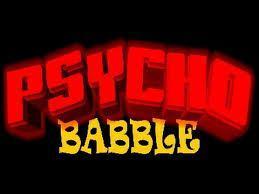A non-profit online magazine, ( TNI), co - founded by Mary Borkowski, Jennifer Bernstein, and Rachel Rosenfelt,recently published by someone named Emily Elizabeth Brown, trashing and deriding "conspiracy theorists" who suspect crisis actors are used in false flag incidents like Sandy Hook.
So who is Emily Elizabeth Brown?
If you click on her name, you'll be told " Page Not Found ".
So much for TNI 's high-minded description of itself as "a space for discussion that aspires to enrich cultural and public life by putting all available resources-both digital and material-toward the promotion and exploration of ideas."
TNI explores ideas alright, but never mind who the authors of those ideas are. That information apparently is a secret and not "for discussion". For that matter, there really is no "discussion" or "exploration of ideas" on TNI because the website does not allow reader comments. Given that, it is not unreasonable for us to think that TNI is really "a space" for the express "promotion," instead of any discussion or exploration, of ideas.
Another word for "promotion" is "propaganda".
Back to the mysterious E. E. Brown's article (h/t ). Here are excerpts:
It is true that professional actors are sometimes hired to simulate disasters; their purpose is to help large organizations run through emergency response drills in preparation for possible catastrophic events. In conspiracy theory world, crisis actors are stans and stand-ins employed by the government to carry out affective labor during false flag operations. Websites claim that the Sandy Hook shooting, along with virtually every major tragedy involving human beings on American soil since 9/11, was a false flag drill that the government decided to take live. [...]
In an interview, the political scientist Michael Barkun explained that conspiracy theorists try to make sense of a confusing world by "dividing the world sharply between the forces of light and the forces of darkness." By imagining the evil forces as plants in the general public-the people with whom we're supposed to sympathize-crisis actor believers erase the lines between good and evil that are usually clearly defined in conspiracy theories. There are no clear lines to separate the people who are 'in on it' and the people who aren't.
An oft-repeated psychological explanation is that conspiracy theories arise as a reaction of disbelief in the face of a tragedy. It is (arguably) more reassuring to believe that a tragedy like Sandy Hook was staged by the government, instead of trying to make sense of the narrative in which somebody decided to walk into an elementary school and shoot 20 children. Then nobody would have died; there was no horrific act of violence. From this perspective, evil is not perpetrated by ordinary people, and the people the government wants us to think are evil are really harmless puppets. The crisis actor conspiracy theory exists in a worldview that is both paranoid and idealistic. Since crisis actor theorists maintain that these acts couldn't have been carried out by people of their own accord, their view of the common man is much more positive than most people's. To the believer, evil is primarily created by tangible, external forces. This combination of idealism and paranoia disrupts the real world in a way that other conspiracy theories don't.
Unlike the typical 9/11 truther, who may hold that the whole event was a hoax but will keep their anger directed at the government, the crisis actor theorist directs their anger and disbelief at the victim. The government is acknowledged as the mastermind, but in the classic conspiracy trope of Us versus Them, each new tragedy brings forth new actors, and nobody is sure which of Them lives among Us.
Did you get that, "conspiracy theorists"?
If you harbor even a suspicion that the U.S. government is capable of conspiratorial machinations and false flags, the mysterious Emily Elizabeth Brown is calling you:
- Simple-minded, because you "try to make sense of a confusing world by 'dividing the world sharply between the forces of light and the forces of darkness.'
- Stupid and can't handle reality, and instead retreat into wishful thinking, because it's "more reassuring to believe that a tragedy like Sandy Hook was staged by the government, instead of trying to make sense of the narrative in which somebody decided to walk into an elementary school and shoot 20 children."
- Paranoid and out-of-step with "the real world".
- Scapegoaters who blame the victims.

Seldom have I read so much pretentious psycho-babble in one single essay as Ms. Brown's, not even in the worst papers written by the worst of my former students. Brown gives new meaning to the word "sophomoric."
I - and you - can write armchair dime-store psychoanalysis as good as Ms. Brown (assuming Emily Elizabeth Brown is her real name and she is really a she who is not government's sockpuppet). Here's my parody of Brown:
An oft-repeated psychological explanation is that those, such as a writer named Emily Elizabeth Brown, who deride conspiracy theories arise as a reaction of what psychologists identify as denial in the face of reality. It is (arguably) more reassuring to believe that governments do not conspire to carry out false flags like the well-documented Operation Northwoods of the Kennedy Administration or the more recent Watergate conspiracy of the Nixon Administration, instead of having to shed their determined childlike innocence, which psychologists would call determined naivete or outright denial of human beings' disposition toward deception. And so, the deniers like Emily Elizabeth Brown could remain cocooned in their comfortable worldview - a world of rainbows and unicorns where there are no conspiracies except in the minds of "conspiracy theorists," and where human nature and government are unfailingly benign and well-intentioned, the only exceptions being those malignant "conspiracy theorists" who would dare question the integrity of persons holding and wielding great power over the little people. From this perspective, evil is not perpetrated by government - notwithstanding the record of the hundreds of millions killed by Nazi and Communist regimes in the 20th century. From this peculiar perspective held by deniers like Emily Elizabeth Brown, evil is perpetrated by those "conspiracy theorists" who would dare imagine that governments could actually plan and undertake conspiracies. To the believer, such as Emily Elizabeth Brown, evil is primarily created by powerless "conspiracy theorists" who actually dare to disrupt the believer's fantasy of the real world.
Instead of Brown spewing her psycho-babble, it would be so much more useful if she engaged her readers with facts and reasoning, as in:
- Have governments, including the U.S. government, engaged in false flag incidents? (The answer, of course, is yes. See, for example, the stunning Operation Northwoods that was planned by the Joint Chiefs of Staff and acquiesced to by the heads of every branch of the U.S. military.)
- Are there or are there not professional crisis actors who simulate mass casualty events? (The answer, of course, is yes, and not just ordinary crisis actors - there are amputee crisis actors!)
- Are there aspects of the Sandy Hook shooting massacre that are suspicious? (The answer, of course, is yes. Go to our "Sandy Hook Massacre" page.)
In the end, Ms. Brown's essay is simply the latest reminder of the enormous differences in liberal vs. conservative worldviews.

As a study published in the reminds us (stripping away the authors' loaded language), liberals view the world as generally "a hospitable place" where human nature fundamentally is benign and where most people are "warm and caring," "nurturant" and "supportive" of others. The exceptions, of course, are those nasty, hateful conservatives. The many nice people include people in government, who can be depended on to care for and "nurture" us. All of which render liberals ideal tools- " useful idiots "- of government and the power élite.
In contrast, the conservative sees the world as "a dangerous place" because human nature is not simply benign. In such a world, the individual must be disciplined and self-reliant, instead of dependent on government. Those in government become more dangerous, the more power they accumulate - all at our expense.
So whose worldview better accords with that of America's Founding Fathers?
Here are two clues:
"What is government itself but the greatest of all reflections on human nature? If men were angels, no government would be necessary. If angels were to govern men, neither external or internal controls on government would be necessary. In framing a government which is to be administered by men over men, the great difficulty lies in this: You must first enable the government to control the governed, and in the next place oblige it to control itself." -James Madison in The Federalist No. 51.
"If once [the people] become inattentive to the public affairs, you and I, and Congress, and Assemblies, Judges, and Governors, shall all become wolves." -Thomas Jefferson, letter to Edward Carrington, 1787.
That is why the Founders fashioned a polity based on a view of human nature as inherently selfish instead of benign, and of government as a necessary evil that must be constrained and delimited with checks and balances. For the plain fact of the matter is that there really are governments who would stoop to killing little children-and more. Just ask the millions of innocent men, women, and children whom the Nazis had slaughtered, or the hundreds of millions of innocent men, women, and children whom the Communists had killed in the former Soviet Union, the People's Republic of China and Kampuchea.
Why would Americans, who partake of the same non-angelic human nature, be uniquely virtuous? Compared to the horrors of the Nazis and Communists, Sandy Hook, if it is a false flag, is small potatoes.

